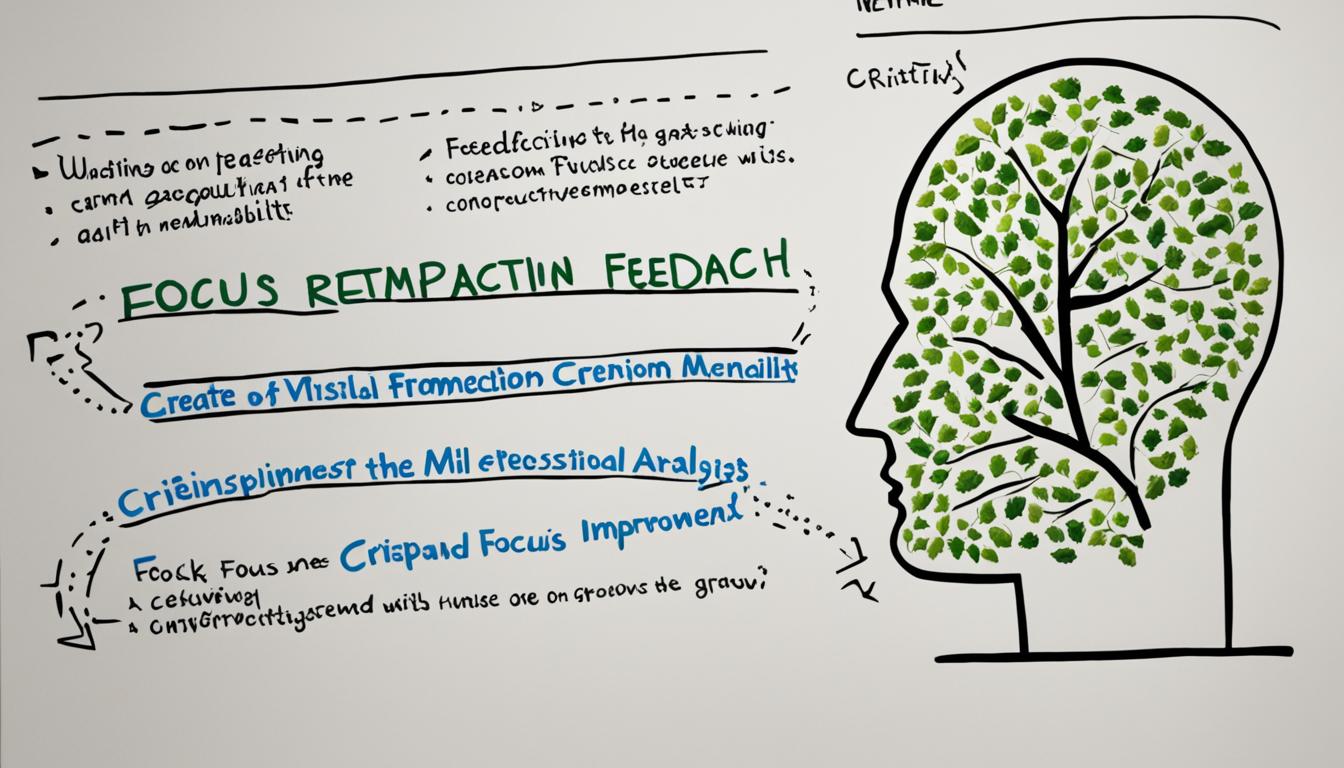Setting effective goals is a game-changer when it comes to improving your golf skills. Whether you’re a beginner or an experienced golfer, having clear goals provides you with direction, motivation, and a roadmap for success. Goals help you prioritize your practice time, push your limits, and ensure you’re consistently challenging yourself. By setting measurable and realistic goals, you can enhance your performance and achieve your best on the golf course.
Key Takeaways:
- Setting goals in golf provides direction, motivation, and a clear plan for improvement.
- Effective goals should be specific, measurable, attainable, relevant, and timely (SMART).
- Writing down your goals and sharing them with others for accountability can enhance your commitment and motivation.
- Incorporating imagery and visualization techniques can reinforce your subconscious mind and increase your chances of success.
- Regularly evaluating and adjusting your goals ensures they remain relevant and aligned with your progress.
Why is goal setting important in golf?
Goal setting is crucial in golf for numerous reasons. Firstly, it provides direction and focus, helping you prioritize your practice sessions and utilize your time effectively. When you have specific goals, you know precisely what areas of your game to work on, ensuring continuous improvement.
Setting goals also pushes you to push your limits and strive for greatness. By challenging yourself with realistic yet ambitious goals, you stay motivated and committed to putting in the necessary effort. However, it’s essential to strike a balance and avoid setting goals that are too unrealistic, as they can lead to discouragement and hinder your progress.
Moreover, goal setting creates a positive mindset and atmosphere. By incorporating imagery and visualization techniques into your goal setting process, you can program your subconscious mind to believe in your goals and increase your chances of achieving them. This positive mindset can be a powerful driving force in your journey towards golf success.
Ultimately, goal setting in golf is more than just setting targets; it’s about creating a roadmap for your improvement. By defining clear and measurable goals, you set yourself up for success, ensuring that every step you take on the golf course is purposeful and focused.
How to set effective goals in golf
Setting effective goals in golf is a step-by-step process that can help you progress towards your long-term aspirations for your game. By breaking down your goals into smaller, measurable objectives, you can stay focused and motivated on your journey to achieving success on the course. Here are the steps for setting effective golf goals:
- Identify your long-term goal: Start by determining where you want to be with your golf game by the end of a specific period, such as a year. This long-term goal will serve as your ultimate target and provide you with direction and purpose.
- Create short-term goals: Break down your long-term goal into smaller, more manageable objectives. These short-term goals should be specific and measurable, allowing you to track your progress and evaluate your performance along the way. Examples include reducing your handicap by a certain number of strokes or improving your average putting score.
- Focus on key areas: Prioritize the areas of your game that will have the most significant impact on your scores. Identify the skills or techniques that require improvement and direct your efforts towards these areas. By honing in on specific aspects of your game, you can enhance your overall performance.
- Write down your goals: Putting your goals in writing can make them more tangible and reinforce your commitment to achieving them. Consider placing your written goals somewhere visible, like a flashcard on your fridge or a note on your mirror, to remind yourself of your aspirations on a daily basis.
- Frame goals in the present tense: Use the power of positive language and frame your goals in the present tense. Instead of saying “I want to be a better putter,” use “I am an exceptional putter.” This mindset shift can help instill confidence and belief in your abilities.
- SMART goals: Ensure that your goals are specific, measurable, attainable, relevant, and timely (SMART). This framework provides clarity and structure, helping you set goals that are realistic and achievable within a given timeframe.
- Regularly review and adjust: Stay proactive in monitoring your progress towards your goals. Regularly evaluate your performance and make any necessary adjustments to your goals or approach. This adaptability ensures that your goals remain relevant and aligned with your development as a golfer.
- Create an action list: Break down your goals further into specific tasks and actions that will help you reach them. These actionable steps will serve as a roadmap to guide your practice sessions and keep you on track towards your objectives.
- Share goals for accountability: Consider sharing your goals with a trusted friend, golf coach, or mentor. By vocalizing your objectives to others, you create a sense of accountability and external support, which can further motivate and push you towards success.
- Schedule regular check-ins: Set aside time for regular check-ins to track your progress and evaluate your performance. This could be a weekly or monthly review where you assess how well you’re progressing towards your goals, make any necessary adjustments, and celebrate your achievements.
By following these steps, you can set effective goals in golf that provide clarity, direction, and motivation as you strive to achieve your best performance on the course.

Setting Effective Goals Example:
| Long-Term Goal: | Lowering handicap from 18 to 12 within 12 months |
|---|---|
| Short-Term Goals: |
|
| Key Areas of Focus: | Putting, driving accuracy |
| Action List: |
|
Importance of imagery in goal setting
Imagery plays a crucial role in goal setting and can significantly enhance your chances of success in golf. By creating vivid mental images of your goals and visualizing yourself achieving them, you program your subconscious mind to believe in your abilities and foster a positive mindset.
This process is known as the law of attraction, and it has proven to be effective in numerous cases. When you visualize success, you strengthen your determination, confidence, and motivation to reach your goals.
To effectively utilize imagery in goal setting, consider creating a vision board. This board should display pictures and visuals that represent your long-term goals in golf. By regularly looking at this vision board, you reinforce the desired outcome and intensify your motivation to achieve those goals.
Furthermore, visualizing success in specific golf shots or challenging situations can directly impact your performance on the course. By mentally rehearsing the perfect swing or envisioning yourself skillfully overcoming obstacles, you train your mind to execute these actions more effectively in real-life scenarios.
By combining the power of imagery with goal setting, you unlock a potent tool for enhancing your golf game and achieving the success you desire.
| Benefits of Using Imagery in Golf Goal Setting |
|---|
| 1. Enhanced motivation and determination |
| 2. Improved confidence and belief in abilities |
| 3. Strengthened focus and concentration |
| 4. Increased mental preparation and readiness |
| 5. Enhanced visualization skills and creative thinking |
| 6. Improved performance in challenging situations |
| 7. Heightened enjoyment and satisfaction in the game |
By leveraging the power of imagery in combination with goal setting, you tap into a valuable resource that can elevate your golf performance to new heights. It allows you to align your subconscious mind with your aspirations and instills a mindset geared toward success.
Tips for effective golf goal setting
When it comes to setting goals in golf, there are a few strategies that can help you set achievable targets and maximize your chances of success. Here are some tips to guide you in your goal-setting journey:
1. Balance result-oriented and process-oriented goals
It’s important to find the right balance between result-oriented goals and process-oriented goals. Result-oriented goals, such as winning a tournament or achieving a specific handicap, can provide a target to strive for. However, they can also create unnecessary pressure and detract from the enjoyment of the game. On the other hand, process-oriented goals focus on specific actions within your control that contribute to your overall improvement. By setting a combination of both types of goals, you can stay motivated while also focusing on the steps needed to reach your desired outcomes.
2. Challenge yourself without overwhelming
Setting goals that are challenging but attainable is key. Avoid setting goals that are too easy and don’t push you to improve. Similarly, setting goals that are too ambitious can feel overwhelming and demotivating. Find the sweet spot where your goals stretch you but also feel within reach. As you achieve these goals, you can gradually set new ones that continue to challenge and inspire you.
3. Regularly evaluate and revise your goals
Goal setting is a dynamic process that requires regular evaluation and adjustment. Throughout the year, take time to review your goals and assess your progress. Are your goals still relevant and aligned with your improvement journey? Are there any new areas of focus that have emerged? By regularly evaluating and revising your goals, you can ensure that they remain meaningful and supportive of your golfing aspirations.
4. Track your performance and progress
Writing down your goals and tracking your performance and progress is essential for maintaining focus and accountability. Create a system that allows you to monitor your achievements and identify areas that may require additional attention or adjustment. By tracking your progress, you can celebrate your successes and make necessary changes to your approach if needed.
5. Seek guidance and support
Working with a golf coach or mentor can provide valuable guidance and support in setting and achieving your goals. They can offer expert advice, help you establish realistic targets, and provide feedback on your progress. Having someone to hold you accountable and offer insights can accelerate your growth and development as a golfer.
By incorporating these strategies into your golf goal setting process, you can set achievable goals that drive your improvement and propel you toward success on the course.
| Strategies for Effective Golf Goal Setting | Tips for Successful Golf Goal Setting | How to Set Achievable Golf Goals |
|---|---|---|
| Balance result-oriented and process-oriented goals | Challenge yourself without overwhelming | Regularly evaluate and revise your goals |
| Track your performance and progress | Seek guidance and support |
Creating a practice routine to achieve your goals
A well-designed practice routine is essential for achieving your golf goals. To optimize your practice sessions, it’s important to develop a structured plan that targets specific areas of your game and aligns with your goals.
Start by identifying the specific areas in your game that need improvement based on your goals. For example, if your goal is to improve your putting average, focus your practice sessions on putting drills and exercises that develop your technique and accuracy.
Developing a golf training plan involves creating a schedule and dedicating a set amount of time each week to practice. Consistency is key, so try to establish a regular practice routine that you can realistically maintain. Whether it’s practicing for an hour every day or a few longer sessions per week, find a routine that works best for you.
When designing your practice routine, it’s important to incorporate a mix of skill-based drills and on-course practice to replicate real-game situations. This will help you transfer your skills from the practice range to the golf course effectively.
In addition to technical practice, consider incorporating mental training exercises and visualization techniques into your routine. Visualization can help you mentally rehearse shots and develop a stronger mindset, which can positively impact your performance on the course.
To measure your progress and evaluate the effectiveness of your practice routine, regularly review your goals and make adjustments as needed. This will ensure that you stay on track and make the necessary adaptations to keep improving.
Golf Practice Strategies for Goal Achievement:
- Set specific goals for each practice session to stay focused and motivated.
- Create a practice schedule that includes dedicated time for both skill-based drills and on-course practice.
- Incorporate mental training exercises and visualization techniques to enhance your performance.
- Regularly review your goals and adapt your practice routine accordingly.
- Seek feedback from a golf coach or mentor to optimize your practice routine and ensure proper technique.
By following a well-designed practice routine that aligns with your goals, you can make significant progress and achieve your best in golf.

Conclusion
Setting effective goals in golf is crucial for driving improvement and achieving your best performance. When you set specific, measurable, attainable, relevant, and timely goals, you provide direction and focus to your practice sessions, ensuring that you’re continually challenging yourself and making progress.
Combining goal setting with imagery and visualization techniques can further enhance your chances of success. By creating vivid mental images of your goals and visualizing yourself achieving them, you program your subconscious mind to believe in your abilities and create a positive mindset. This positive mindset can greatly contribute to your overall performance on the course.
Regularly evaluating and adjusting your goals based on your progress is essential to keep them relevant and aligned with your improvement journey. Additionally, creating a practice routine that targets specific areas of your game and incorporates both technical drills and on-course practice is key to achieving your goals. Seeking feedback and guidance from a golf coach or mentor can help maximize the effectiveness of your practice and ensure proper technique.
By setting effective goals, incorporating imagery and visualization, and following a dedicated practice routine, you have the tools necessary to achieve your best in golf. So go out there, set your goals, practice diligently, and watch your game improve as you strive towards reaching your full potential.
FAQ
Why is goal setting important in golf?
Goal setting is important in golf because it provides direction, focus, and motivation. Setting goals helps prioritize practice time, pushes you to improve, and creates a positive mindset.
How to set effective goals in golf?
To set effective goals in golf, follow the SMART method: be specific, measurable, attainable, relevant, and timely. Break down long-term goals into smaller, short-term goals and write them down for accountability.
What is the importance of imagery in goal setting?
Imagery plays a crucial role in goal setting as it helps reinforce your subconscious mind, create a positive mindset, and increase your chances of success. Visualizing your goals and creating a vision board can enhance your golf game.
What are some tips for effective golf goal setting?
Some tips for effective golf goal setting include focusing on both result-oriented and process-oriented goals, setting challenging but attainable goals, regularly reviewing and adjusting goals, and seeking feedback and guidance from a golf coach or mentor.
How can I create a practice routine to achieve my goals?
Create a practice routine by identifying the areas of your game that need improvement based on your goals. Dedicate a set amount of time each week to practice, incorporating both skill-based drills and on-course practice. Track your progress and seek feedback from a golf coach or mentor.
What is the importance of goal setting in golf?
Goal setting in golf is important as it provides direction, focus, and motivation, helps prioritize practice time, pushes you to improve, and creates a positive mindset.



